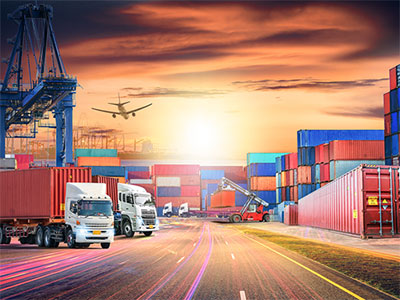

Forward-Looking Logistics Surge
Trade & logistics will surge in the next few quarters! There are several factors that add up to this surge, yet it flies in the face of corporate mandates for inventory reduction. What disruptions and/or issues will translate into a logistics surge (assuming China & other countries can ramp up?
Key Reasons:
- Fear of tariffs
- Concern about a strike in the East Coast & Gulf Coast ports
- Preparation for the Chinese New Year
Preparation to reshore, nearshore, friendlyshore, expand manufacturing & vertically integrate
Disruptions Create the Surge
What do all the key reasons have in common? Disruption. Thus, let’s step into the details of the key reasons behind the surge.
- Tariffs: As we explained in our recent article, “What the Election Means for Manufacturing and Supply Chain,” reciprocal tariffs to stabilize the trade playing field will become a reality. In addition, tariffs will become a key negotiating tool. Thus, they might go into force for a brief period of time and they are likely to be curtailed if manufacturing is sourced to the U.S. or ramped up in the U.S. (instead of other countries). Tariffs will increase costs upfront which are likely but not necessarily passed on to consumers. On the other hand, the purpose of tariffs is to encourage manufacturing in the U.S. which would employ people and increase investment in the U.S. which would stimulate the economy and increase productivity. The tariffs Trump put in place during his first term were left intact by Biden. Since tariffs will occur, companies will try to stock up in advance to serve customers.
- Strikes: As we explained in our Supply Chain XChange article, “Strikes and labor negotiations highlight need for resilient supply chains,” it is likely that the delayed strike on the East Coast and Gulf Coast ports will resurface over the issue of automation. The workers want no automation yet the U.S. ports are rated some of the least competitive in the world. A strike on the East Coast port would create havoc in the supply chain, and so companies will try to stock up in advance to ensure they can serve customers.
- Chinese New Year: Chinese New Year always leads to an increase in imports ahead of the shutdown to ensure companies can serve customers. Since Chinese New Year occurs just after the new administration takes over, companies will plan ahead.
Manufacturing Renaissance: Due to geopolitical and supply chain risk, the new administration’s priority to increase manufacturing in the U.S., and the fact that the total cost of manufacturing in the U.S. for non-labor intensive products that cannot be automated has come into alignment with China, reshoring, expanding manufacturing, and vertical integration will take off. As manufacturing transitions, there will be a logistics surge to plan for the transition without impact to customers.
What Will the Forward-Thinking Executives Do?
Yes, forward-thinking executives will create a trade and logistics surge for the next several months. However, that will be insufficient to ensure success. A little common sense will go a long way. If many manufacturers are increasing orders simultaneously, it will create a bottleneck. Forward-thinking executives would have started to increase orders even before the election outcome to address the likely resurgence of manufacturing, Chinese New Year and probable strike. With that said, we must act rapidly. As much as year-end objectives are likely to be front of mind, if you want stock to be available of products, critical components and core raw materials to sustain your company during the transition, take a straight shot to your Planning Team to get on top of your orders. If you have access to internal manufacturing capability, you will be ramping up production, investing in automation, developing skills, and building organizational capabilities to scale rapidly. You also will increase safety stock of critical items, not all items as you right-size inventory. Refer to our article, “Inventory Optimization in Full Focus in the Turbulent Economy” for more information.
Forward-thinking executives will be rolling out, upgrading, and utilizing a SIOP (Sales Inventory Operations Planning) process to stay ahead of changing conditions so that you can make the appropriate adjustments to serve customers and ensure profitable growth. As many companies evolve their supply chains simultaneously, it will impact you. The impacts will be far ranging from significant revenue increases for industrial and building products manufacturers that can respond quickly to a war for manufacturing and supply chain talent to a race to automate, digitize, and leverage advanced technologies such as artificial intelligence and additive manufacturing. Forward-thinking executives will maintain a rigorous focus on changes to customer demand and evolve their manufacturing and supply chain strategies to ensure success. To learn more about how to roll out the full SIOP process and read about case studies, read our book, SIOP: Creating Predictable Revenue and EBITDA Growth.
There are several other priorities that forward-thinking executives should prioritize. Refer to our special report, “FutureScape: Crafting Tomorrow’s Supply Chain Today” to gain insights from 32 thought leaders on what they recommend from the manufacturing, supply chain, and technology viewpoints.
If you are interested in reading more on this topic:
Reallocating Manufacturing & Supply Chain Capacity to Mitigate Risk & Ensure Success


